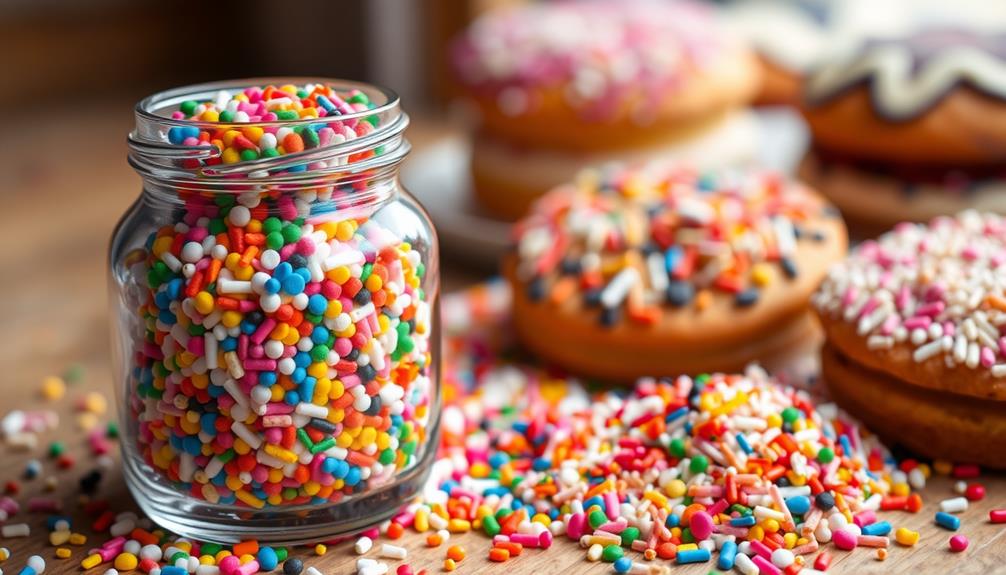The discussion surrounding British sprinkles, also known as ‘hundreds and thousands,’ brings to light a clash between tradition and modernity in the world of desserts. Originating in the late 18th century, this playful term brings up feelings of nostalgia and childhood memories. While many still prefer the whimsical ‘hundreds and thousands,’ the shift towards simpler language has resulted in the widespread use of ‘sprinkles.’ This change reflects the impact of globalization and American terminology. Both terms showcase not only our love for colorful sweets but also the evolution of culinary identities. If you’re interested in how these terms tie into larger cultural stories, there is plenty more to delve into.
Key Takeaways
- "Hundreds and thousands" originated in the late 18th century, reflecting British traditions in cake decoration during the Industrial Revolution.
- The term "sprinkles" has gained popularity recently, influenced by globalization and cultural exchanges with America.
- Nostalgia associated with "hundreds and thousands" evokes childhood memories tied to celebrations and vibrant dessert decor.
- Regional variations exist; Australians still use "hundreds and thousands," while Americans prefer "sprinkles" or "jimmies" for chocolate types.
- Globalization has streamlined food terminology, favoring simpler, relatable terms like "sprinkles" over more complex expressions.
Origins of British Sprinkles
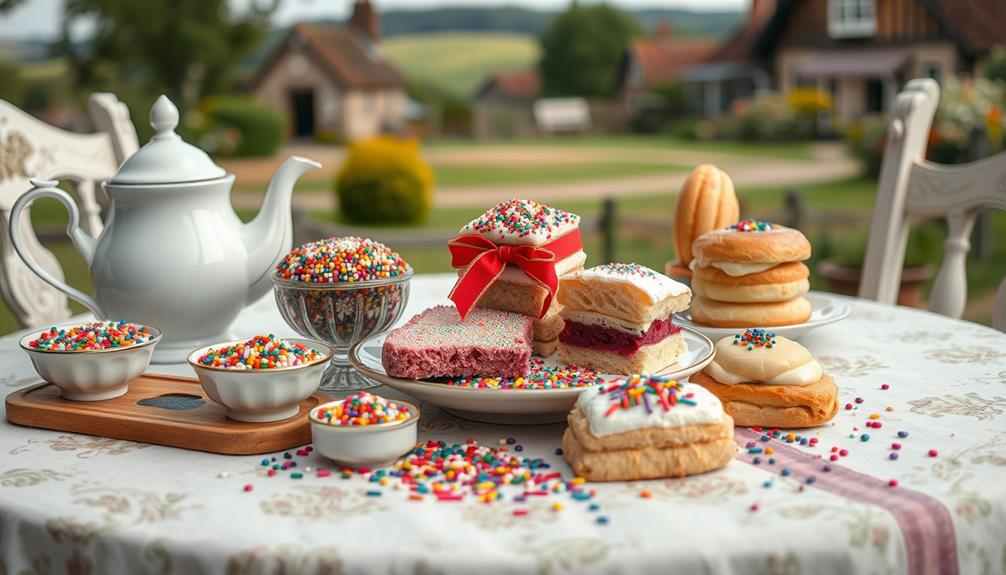
The delightful world of British sprinkles, often referred to as "hundreds and thousands," has its roots in the late 18th century during the Industrial Revolution. During this time, the demand for brightly colored confections grew as sugar production became more affordable and widespread. British sprinkles quickly became a popular topping for cakes, cupcakes, and other desserts, adding a touch of whimsy to any sweet treat. Today, these colorful confections can be found in households across the United Kingdom, and are often discovered while cleaning sofa cushions at home.
Back then, these tiny sugar decorations became popular for adorning cakes and desserts, adding a burst of color and sweetness.
You might find it fascinating that the term "hundreds and thousands" reflects both the abundance of these sprinkles and the playful nature of British culinary tradition.
As language evolved, the term "sprinkles" emerged, showcasing a shift towards simpler, more accessible terminology.
This change not only highlights British affection for colorful confections but also signals broader cultural exchanges, particularly with American influences, illustrating how culinary language can transform over time.
Cultural Significance of Terminology
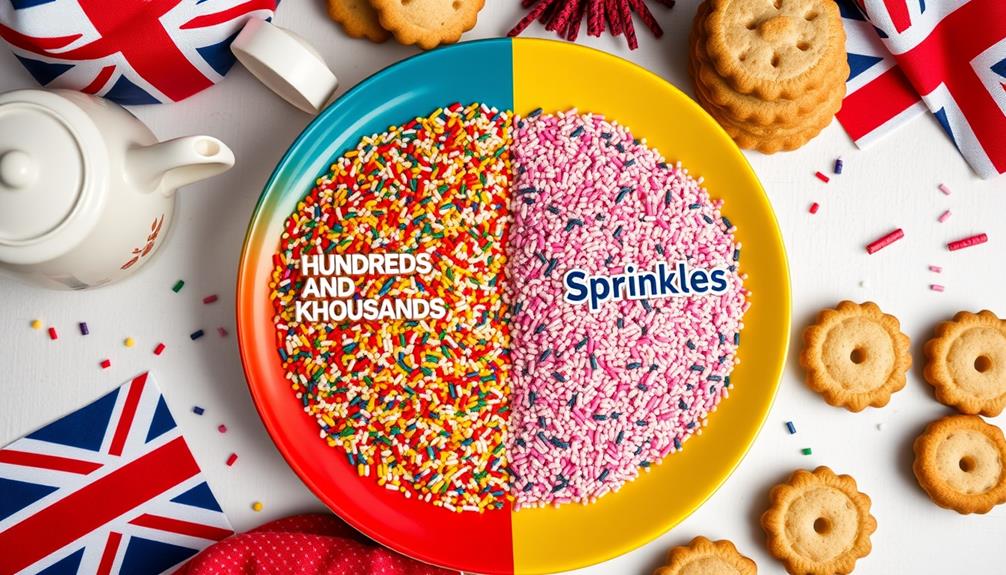
As the terminology around sprinkles has evolved, so has its cultural significance within British culinary traditions.
When you hear "hundreds and thousands," it evokes a sense of nostalgia, linking you to childhood celebrations and festive moments. This term reflects a time when opulence and vibrancy were essential in dessert decoration.
Switching to "sprinkles" signifies not just a linguistic shift but also a broader cultural integration influenced by globalization. You might notice that this change mirrors contemporary preferences for simpler, more accessible language in food.
Ultimately, the way you refer to these colorful toppings connects you to a larger narrative about food, celebration, and the evolving nature of British culinary identity.
Evolution of Language Usage
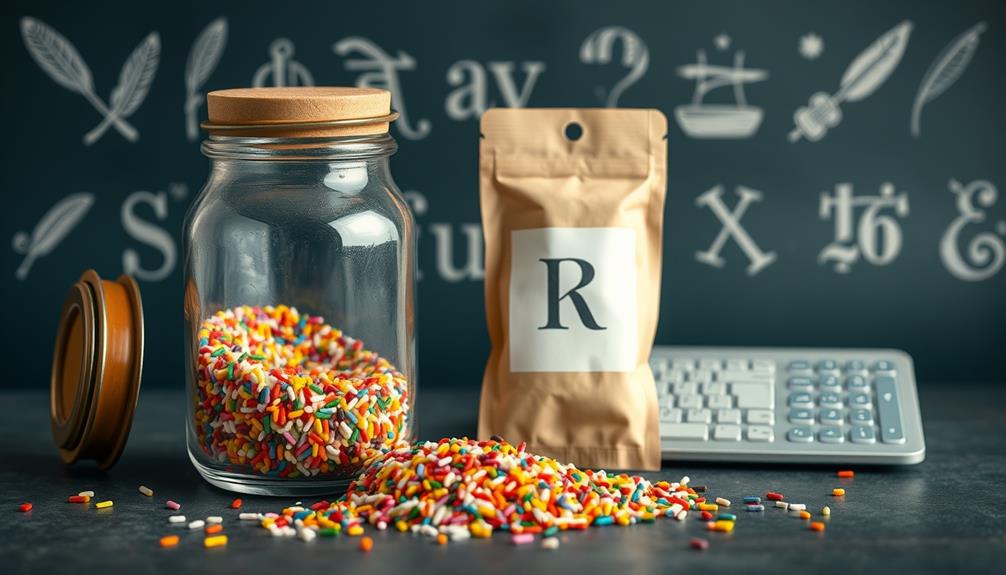
Language around food constantly evolves, reflecting changes in society and consumer preferences. You might notice this shift in how we refer to those tiny, colorful confections.
Here are some key aspects of this evolution:
- Simplification: Terms like "sprinkles" are quicker and easier to say.
- Cultural Exchange: British English is adopting American terms, reflecting globalization.
- Modernization: As culinary practices change, language adapts to be more relatable.
- Consumer Trends: People prefer straightforward language that resonates with their experiences.
This evolution shows how language evolves alongside culinary trends, making food discussions more accessible and engaging for everyone.
Regional Variances in Terminology

Exploring the regional variances in terminology for sprinkles reveals fascinating cultural differences. In the U.S., you'll likely hear "sprinkles" or "jimmies" for chocolate varieties, highlighting regional preferences.
Australians often stick with "hundreds and thousands," a nod to their British roots. Meanwhile, in the Netherlands, "hagelslag" takes center stage, typically enjoyed on bread for breakfast.
If you venture into Japan, you'll find nonpareils, commonly used to adorn traditional sweets like wagashi. Each term reflects not only local language preferences but also culinary traditions that shape how people experience these delightful toppings.
Understanding these nuances enriches your appreciation for the global enjoyment of sprinkles and the stories they tell about different cultures.
Impact of Globalization on Terms
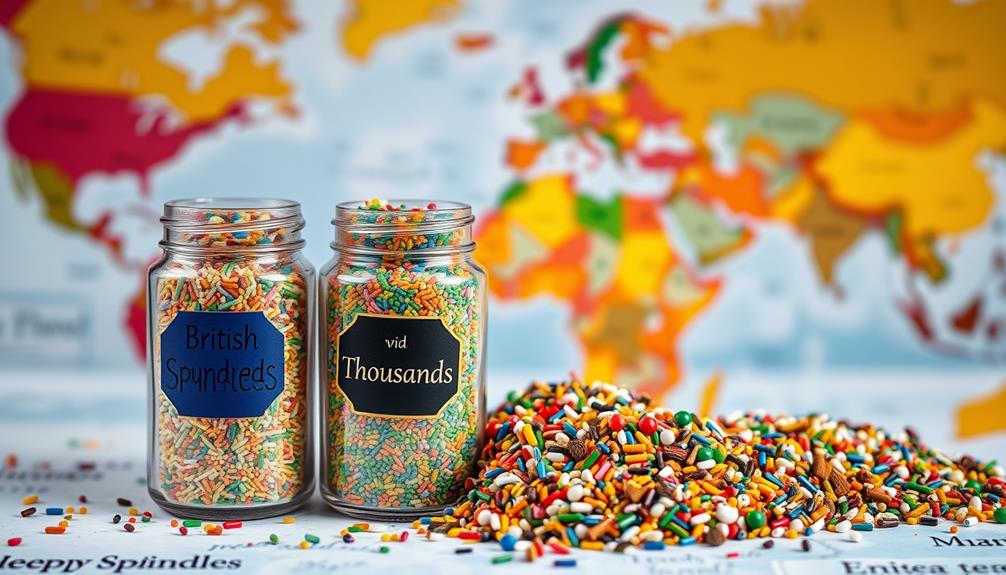
The influence of globalization has stirred up the culinary landscape, transforming how we refer to sprinkles across different regions.
As you explore this evolution, you'll notice several key impacts:
- Language Simplification: Terms like "sprinkles" replace the longer "hundreds and thousands" for ease of communication.
- Cultural Exchange: American influence shifts British terminology, showcasing a blend of culinary practices.
- Accessibility: Simplified terms make it easier for consumers to relate to and enjoy confections.
- Market Trends: Globalization drives demand for varied sprinkle types, reflecting diverse tastes and preferences.
These changes not only shape how we speak but also how we enjoy our treats, illustrating the dynamic interplay between language and culture in a globalized world.
Frequently Asked Questions
What Are the Main Ingredients in Traditional British Sprinkles?
Traditional British sprinkles mainly consist of sugar, cornstarch, and food coloring. You'll find them in various shapes and sizes, adding that delightful crunch and vibrant color to your favorite cakes and desserts.
Can I Make Homemade Hundreds and Thousands?
Yes, you can make homemade hundreds and thousands! Simply mix sugar with food coloring and spread it out to dry. Once dry, you'll have colorful sprinkles ready to decorate your favorite treats. Enjoy!
Are There Gluten-Free Options for Sprinkles Available?
Yes, there are gluten-free options for sprinkles. You can find brands that specifically label their sprinkles as gluten-free, ensuring you enjoy your treats without worrying about gluten. Always check the ingredient list for safety.
How Are Sprinkles Used in British Desserts?
In British desserts, sprinkles transform ordinary treats into festive delights, symbolizing celebration. You’ll find them adorning cakes and biscuits, adding color and joy, inviting everyone to indulge in sweetness and create cherished memories together. As families gather around the table, stories and laughter flow, reminiscent of beloved moments from a bear Christmas episode recap—where warmth and togetherness reign supreme. Each dessert becomes a centerpiece, embodying the spirit of the season and encouraging everyone to partake in the delicious festivities.
What Is the Difference Between Sprinkles and Other Cake Decorations?
Sprinkles are tiny, colorful sugar decorations that add texture and fun to desserts, while other cake decorations, like fondant or marzipan, tend to be thicker, more elaborate, and often serve a more structural purpose.
Conclusion
As you plunge into the world of confections, it's fascinating to note that 70% of Brits still prefer the term "hundreds and thousands" over "sprinkles." This statistic highlights how language shapes our culinary experiences, reflecting both tradition and change. Whether you're decorating a cake or sharing memories, these sweet toppings spark a delightful debate. Embracing both terms allows you to connect with the past while enjoying the present, sweetening your culinary journey all the more.
